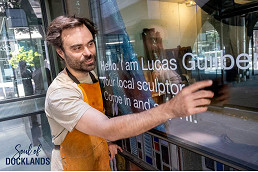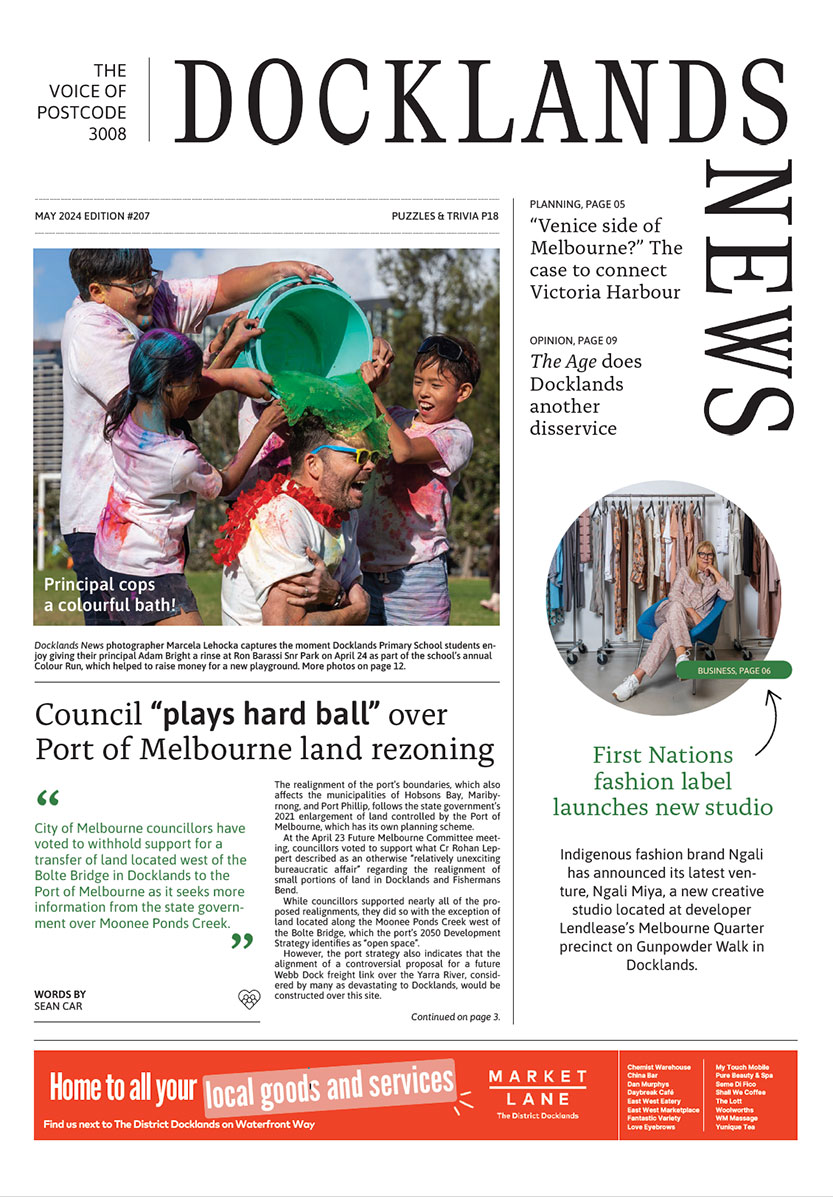Berthing at Little Dock … maybe for some tea
Before there was a bridge, this scene is what met vehicles at the corner of Spencer and Flinders streets.
The exact period of this photo is sometime in the late 19th or early 20th century, and features Spencer Dock, also known as Little Dock. It was opened in August 1854 and was described by The Argus (August 18) as the “first public dock in Victoria”. The first ship to enter was the Flying Cloud, which unloaded 300 tonnes of cargo. As The Argus reported, because the government was “too slow for the spirit of the people”, it was up to the merchants to do their own celebrating. Around 90 minutes before the dock opened, the Flying Cloud’s owner, Mr Throckmorton, ordered the Criterion Hotel’s Mr Moss to organise a makeshift luncheon on the vessel to celebrate the occasion. By some miracle, the order was fulfilled in the most “efficient and satisfactory matter”.
For more than 70 years, the dock was a mainstay for the many smaller boats that could navigate the shallow bends of the Yarra. This included a group of trading ships known as the Mosquito Fleet. The fleet consisted of small ships that travelled across Bass Strait, usually for timber and other cargo. Even as steamers became the primary mode of sea transport in the early 20th century, masted ships such as ketches, schooners and brigantines were still economical due to their reliance on wind power instead of expensive coal or fuel. Due to their small size, they were perfect for delivering cargo to seaside or riverside towns that didn’t have access to the rail network. The Herald in 1916 (May 27), reported how they were vital to resort areas between Mornington and Port Phillip Heads, especially as they visited with cargo three times a week in the summertime. Former president of the Royal Historical Society of Victoria, George R. Leggett, wrote in 1945 (The Argus, April 21) that on a busy day, so many would berth at the dock that “it was possible to cross one side to another on the decks – five abreast and one across the end – two tiers of them.”
Two ships have been identified on the left-hand side of this image. The darker one is known as the Orsin, a 42-tonne ketch. The white-hulled ship is the Berean, a 71-tonne ketch that measured 24m long and was built in Tasmania in 1877. It served as a trade ship until it was sold to the Victorian Government in 1911 for £700. It then served as a storage ship for gunpowder and explosives until the 1930s. By 1937, The Argus (September 17) reported the “rotting hulk” was resting at Williamstown with other used ships, likely awaiting destruction.
After a voyage, a sailor would want a pint or two at the bar, or, if they were a teetotaller, a cup of tea. One of the most popular tea brands of the era was Robur whose warehouse (known today as The Tea House) is the lone behemoth towering over the South Melbourne skyline. Standing at six stories tall, the building was constructed in 1887 as a warehouse for stationers Ferguson and Mitchell. Built on swampy ground, the engineers were able to construct it using an innovative technique which created a sturdy foundation on 450 timber piles and concrete rafts. In the early 1900s it was owned by S. A. Palmer, who sold the herbal remedy known as “Vitadatio”.
Robur inhabited the building by 1906. They started as a brand owned by Hawthorn, Rhodes and Co. in the 1890s, at a time when Australia was drinking more tea than any other country. The distributor James Service and Co. bought the brand in 1900 and established the Robur Tea Company. They also had a factory on Queensbridge St, equipped with machinery that mixed the tea leaves, using fans and magnets to remove dust and stray metal parts, before they were packed into vegetable parchment bags. Workers (around 120 at the time), wore white aprons as they diligently prepared the tea for grocery shops all over Victoria.
The brand was also known for its wide array of advertising campaigns. In the following decades they did printed promotional calendars with well-known artworks found in galleries, wartime promotions where families were encouraged to donate tea to the ANZACs, and a series of wall-painted advertisements featuring their signature teapot logo that adorned various brick walls in and around Melbourne (some of these ghost signs can still be found in their fading glory today). All the while, they appealed to many middle-class or lower-class suburbanites, who wanted to be classy for their guests at only a fraction of the expense.
The warehouse would remain in business until the 1970s. The Robur Company was bought by Tetley and then the Indian-based Tatra. Today, the building’s towering presence on the South Melbourne skyline has been diminished by the Convention Centre. However, it is still an impressive vestige of Southbank’s industrial past. •

Meet Lucas Guilbert




 Download the Latest Edition
Download the Latest Edition
